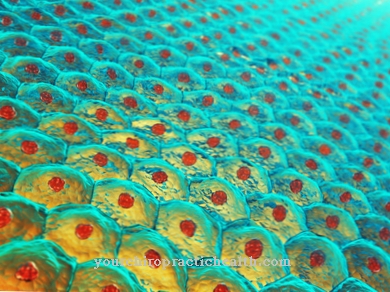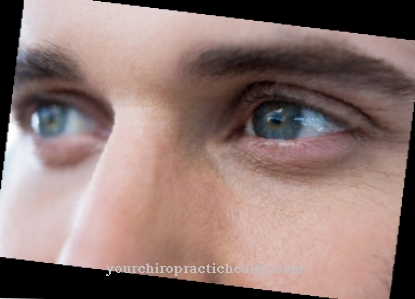As asymmetrical tonic neck reflex (ATNR) is the name given to the typical movement of a newborn baby who turns his head on its side, while at the same time extending his arm and leg. In contrast, on the side facing away from the head, the limbs bend. In addition, the fist on the side of the face is more likely to open, while it is usually closed on the opposite side. This early childhood reflex will too Fencing conservation called.
What is the asymmetrical tonic neck reflex?
The asymmetrical tonic neck reflex begins to be felt as early as the eighteenth week of pregnancy. This movement of the fetus increases in intensity until birth. This promotes the child's motor development and the build-up of muscle strength. Finally, the ATNR, in conjunction with other acquired reflexes of the baby, very effectively supports the birth process.
The asymmetrical tonic neck reflex greatly improves the mobility of the fetus' shoulders and hips as the fetus makes its way through the tight maternal pelvis. In the birth canal, the baby has to turn several times like on a spiral, and the ATNR is very helpful for this.
The reflex is stimulated by applying pressure to the neck. After the birth, the effects of the ATNR gradually weaken. The first abnormalities pass after four to eight weeks of life. However, if there are difficulties during childbirth, for example as a result of a caesarean section or a forceps delivery, the inhibition of the asymmetrical tonic neck reflex can be delayed. Sometimes it is never entirely suppressed in such cases.
Function & task
The newborn can only move his hands to the center of the body and beyond without effort if the asymmetrical tonic neck reflex has been successfully inhibited. For example, they cannot put their hands to their mouth to examine any object beforehand.
Once the ATNR has been largely prevented, the eyes can also become more independent of head movements. This is the only way the baby can later hold onto an external object visually, even if it is currently moving.
However, if the asymmetrical tonic neck reflex still determines the baby's movements after the fourth to sixth month of life, it becomes more and more an obstacle to the further development of the infant's gross and fine motor skills.
Turning the head on its side can then cause involuntary stretching of the limbs on the side of the face. Under certain circumstances, the persistent fencing posture is then responsible for the fact that a child cannot turn from back to stomach, or only with great difficulty, or later cannot learn to crawl properly.
In such cases, the bending and stretching of arms and legs are still largely determined by the posture and movement of the head, so that, for example, cross movements are difficult for the child to perform. It fails because of its own ATN reflexes that have been dominant for too long.
Illnesses & ailments
How much this deficiency can become established in further development can be seen in individual cases even in the beginning of school. Such a child, no matter how hard they practice, is unable to keep to the given lines or the left margin when writing. Problems with the handling of the writing instrument, pressing too hard and difficulties with simple copying exercises can also be traced back to the ATNR suffered in early childhood.
Reading is also often complicated for children with an unsaved asymmetrical tonic neck reflex, as their eyes can only more or less laboriously stay in the respective line of text. Individual letters, punctuation marks or even entire words are easily skipped over or the glance suddenly ends up on the wrong line. If writing and head movement, such as looking at the blackboard, happen at the same time, the affected children usually slide the writing implement up or down. In addition, under certain circumstances one of the child's arms will stretch automatically as soon as they turn their head, for example to look at the blackboard.
This reflex will also include the fingers opening unintentionally, which makes writing by hand even more difficult. Difficulties in hearing and speaking cannot be ruled out in these cases. Occasionally, perception problems arise in everyday life, especially when planning unfamiliar actions.
The early childhood (primitive) reflexes are not initially controlled by the cerebrum and can only be clearly followed in the baby's first months of life. Later they are gradually suppressed as the cerebrum and especially the frontal lobes develop. If typical early childhood reflexes return in old age, for example in dementia they indicate disorders of the brain structure.
The reflexes appear from a certain age of maturity of the child and disappear again as if on a schedule. Accordingly, a premature baby shows different reflexes than a term child. The disappearance of the reflexes is the prerequisite for a child to internalize and learn the elementary movements. For example, a baby's foot reflex has to regress before it can later acquire the ability to stand and walk.
If the reflexes remain formative for a child, the physician can intervene with relatively simple therapeutic means. Training the child's head movements is often enough for this.













.jpg)

.jpg)
.jpg)











.jpg)